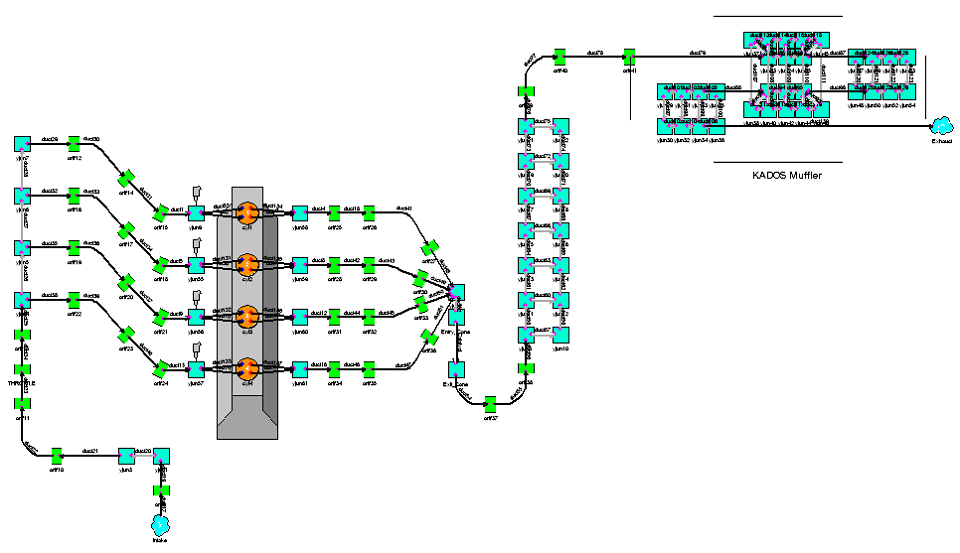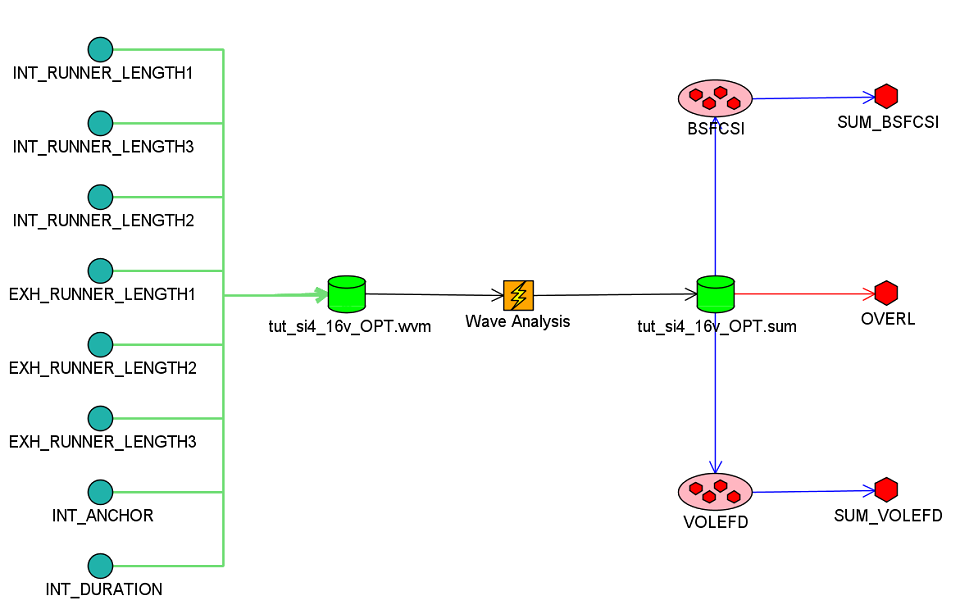Challenges are manifold
A free application note that details how Optimus is combined with Ricardo WAVE to optimize a 4-cylinder gasoline engine, considering multiple competing objectives
Competitive pressures and the need to comply with an increasing number of regulations challenge automotive manufacturers and suppliers to develop high-quality products in ever-shorter time frames. This application note describes how Optimus was used with Ricardo WAVE to optimize the intake manifold geometry and valve timing of a 4-cylinder gasoline engine. It resulted in a so-called Pareto optimal solution that balances maximum engine performance with minimum fuel consumption, while complying with emission regulations.
Simulation facts
Engine cycle simulation software, such as Ricardo WAVE, calculated engine performance based on input data provided by design engineers. In this particular application note, a model of a 4-cylinder gasoline engine with spark ignition has been created with Ricardo WaveBuild, representing all relevant components of the intake and airbox, inlet manifold, cylinder head, exhaust manifold and exhaust line. The model is set to run 8 different cases, representing the engine running at specific RPM values: 1000, 2000, ... up to 8000.

Solution approach
The engine performance simulation workflow is captured using the Optimus graphical user interface. This workflow includes the Ricardo WAVE software, as well as the related input and output files. Design of Experiment techniques generate sufficient data points to identify valve lift parameters as the most influential parameters on both high-end and low-end volumetric efficiency. The data points are then used to fit a response surface model or surrogate model which is ultimately used for multi-objective optimization, calculating Pareto points on which the engineering team can base its design decisions.

TO FIND OUT MORE, DOWNLOAD YOUR COPY!
Download your copy »©2025 Noesis Solutions • Use of this website is subject to our legal disclaimer
Cookie policy • Cookie Settings • Privacy Notice • Design & Development by Zenjoy